Swinside Stone Circle
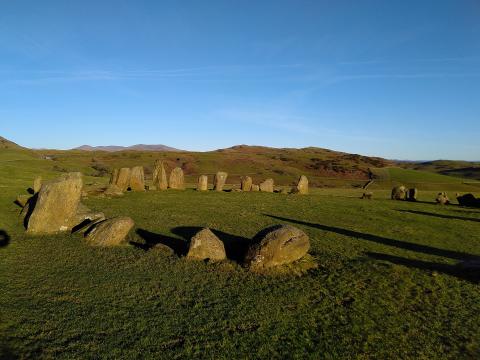
Last weekend, a certain minister of the gospel and I visited Swinside Stone Circle in Cumbria. Located on Black Combe, we were required to abandon the car in a layby before ascending the fell. There, in the low but bright December sun, we saw the 55 large stones cast long shadows on the surrounding land. Quite why the ancestors assembled such enigmatic constructions remains a mystery, though I shall share my own theory below.
On our return walk to the car, we were passed by a troupe of cheerful, gayly dressed women of indeterminate sexuality, making their own ascent to the circle. One wore a peculiar dark dress and large hat; others carried masks with straw for hair. They all returned our greetings, one rather enthusiastically so. Although the old pagan feast of Yule was still three days off, I assumed these ladies were off to the circle to cavort and frolic, in the worship of the old pagan gods. It was a full moon that night, and the fog in the valley below lent the day a mysterious air. Indeed, if I were a nature-worshipper, Swinside Circle on that strange, moon-lit evening would have been a most conducive place at which to expend what energies I could muster.
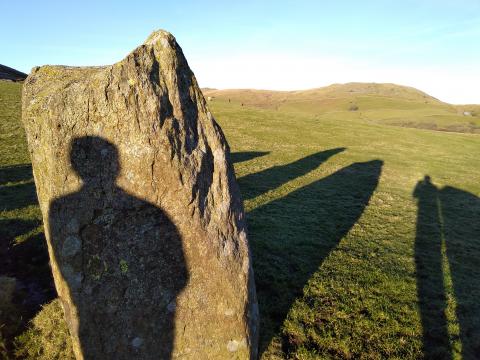
My own explanation for the builders’ troubles was not to provide strangely attired ladies in sensible shoes a platform on which to worship the great Mother, but to fulfil the true God’s command to Noah. In Genesis 9, He commands Noah and his three sons to “fill the earth”, something their descendants deliberately defied at Babel, two chapters later. God therefore scattered them Himself, the tribes of Japheth moving north and west into Europe. As they reached new territories, they built altars to the Creator, marking the land with these stone ‘signatures’, eloquent demonstrations of their eventual compliance with heaven’s decree.
My theory might seem a little far-fetched, and worthy of ridicule by those who reject the book of Genesis as historical record. If true, however, it means that last Saturday’s visit to the stones by two pastors, servants of the Most High, was far more appropriate that than the dancing maidens of Hekate/Artemis, who doubtless assumed the tall stones were erected for their own pleasure.
Therefore its name is called Babel, because there the Lord confused the language of all the earth; and from there the Lord scattered them abroad over the face of all the earth. Gen 11:9
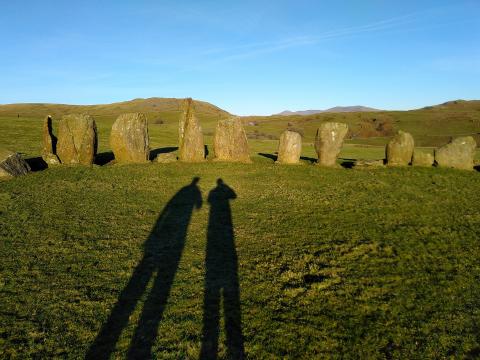
Two servants of Japheth's God
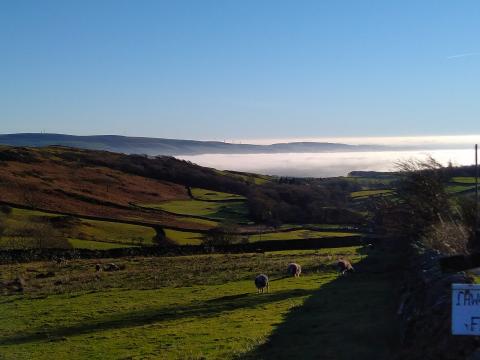
View from the Circle (the white mass is fog, not a Cumbrian lake)
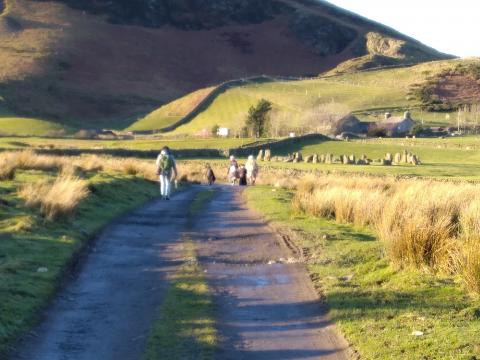
Last of the pagans
- Log in to post comments


 Sunday Worship 10.45am & 6.00pm
Sunday Worship 10.45am & 6.00pm